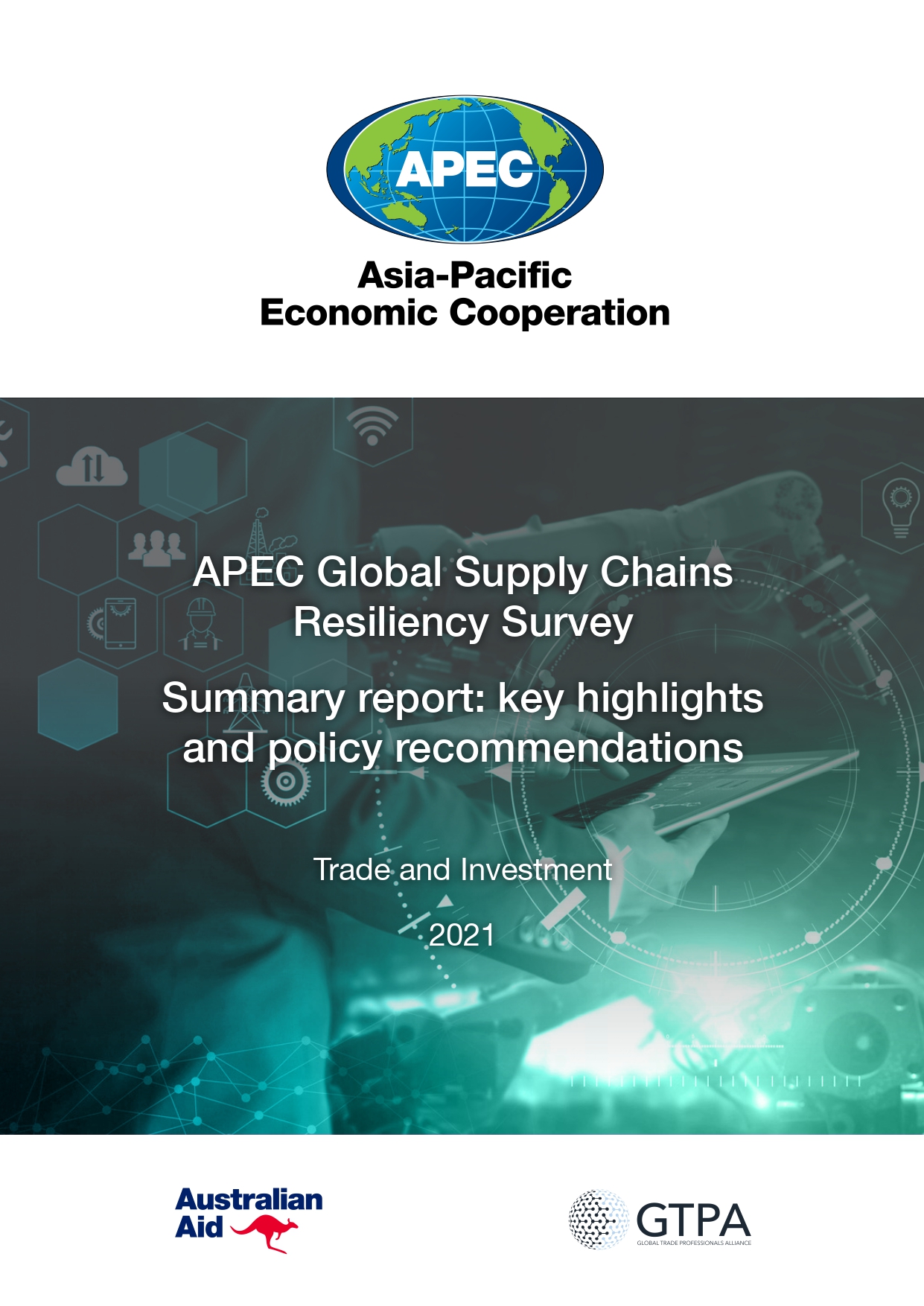APEC Global Supply Chains highlights report

Global value chains (GVCs) are a crucial component of international trade, with more than two-thirds of global trade passing through them: The APEC Global Supply Chains highlights report
Global value chains (GVCs) are a crucial component of international trade, with more than two-thirds of global trade passing through them.
Driven by disruptions such as COVID-19 and the resulting worldwide economic slowdown, GVCs – and broader supply chains – are facing pressures for rapid transformation.
In the face of this transformation and as we look toward economic recovery from the current crisis, now is the ideal time to better pair the needs of businesses in supply chains with government policies and recovery programs.
The Australian Government recently funded a survey into global supply chains to better understand the needs of SMEs in APEC economies after the COVID-19 pandemic. The survey was conducted between 25 July and 30 November 2020. A total of 1511 responses were received, divided into 911 for the SMEs survey, 188 for the Large Businesses survey, and 312 for the Industry & Government organisations survey. A further 106 respondents do not participate in global trade.
Of the responses, 31% were from Australia, 18% from Japan, 11% from the Russian Federation, 6% from Indonesia and 4% from the United States. The rest were divided amongst other economies. The enterprises surveyed reported operations in a total of 82 economies worldwide.
The survey was supported by the Department of Foreign Affairs and Trade (DFAT) of the Australian Government and implemented online by GTPA and North Carolina State University (NCSU) Supply Chain Resource Cooperative.
The first four reports are now publicly available. These can be downloaded online at: www.gtpalliance.com. Additional reports will be generated available in due course.
Each report provides some clear policy recommendations to assist APEC member economies to respond to the changes facing global trade recovery and global value chain resilience.